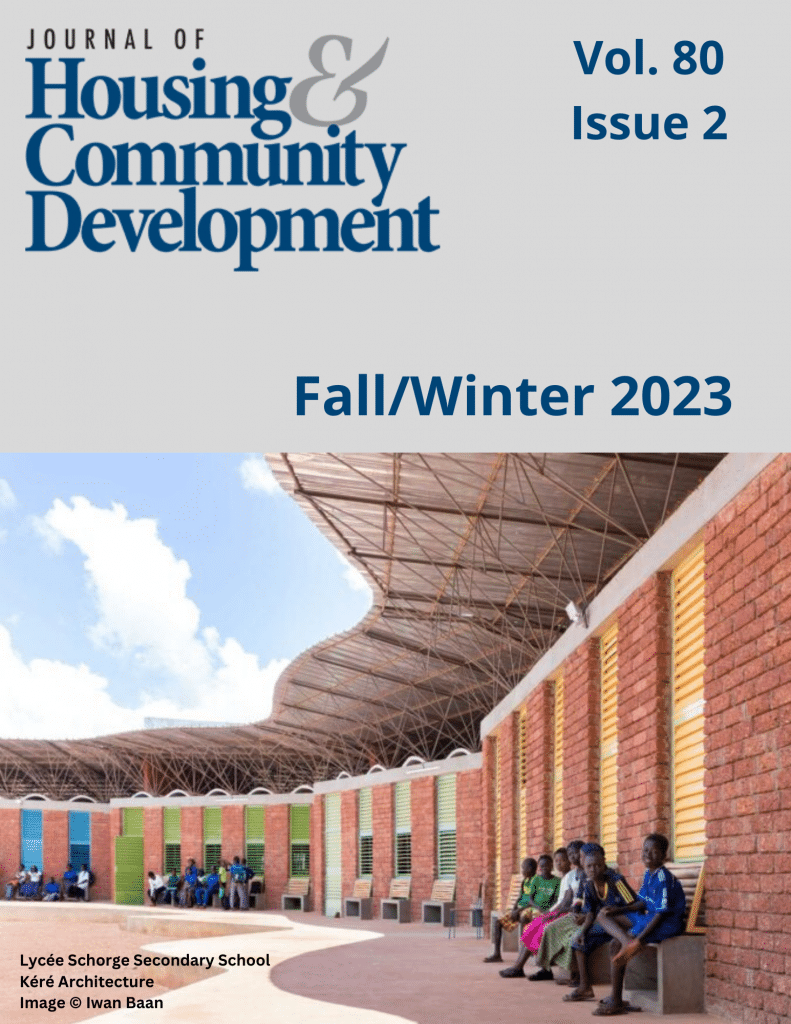Rethinking Zoning to Increase Affordable Housing
Zoning, initially designed to regulate land use and density, has evolved into a significant impediment for growing communities attempting to adapt to current circumstances. Restrictive land use regulations and zoning laws have been linked to higher housing prices, reduced construction activity, and a decrease in the elasticity of housing supply.1 Historically, zoning practices have been employed by affluent communities to boost property values, decrease tax burdens, and often impede the influx of non-white residents.2 Consequently, housing stock fails to meet demand, exacerbating housing affordability challenges, even in previously affordable cities. In 2021, home prices experienced an alarming growth rate of nearly 20 percent, and rents surged.3 Restrictive zoning practices significantly contribute to the ongoing housing affordability crisis, with a staggering 70 percent of residential areas in major cities restricting or banning apartments.4 What emerges from this is a tapestry of outdated ordinances and codes, some dating back over a century, which increasingly obstruct the capacity of cities to adapt and grow in ways that align with the evolving needs of their communities. In many communities there is a need for land use reform, emphasizing the importance of tailoring adaptive zoning policies to cater to the dynamic needs of individual communities.
Racial and Income Segregation
Zoning became more widespread after the Supreme Court ruled in Euclid v. Ambler (1926) that Euclid, Ohio could ban apartments in areas of single-family housing. Between 1900 and 1940 racial and economic segregations increased by 50 percent, a period of time that saw many cities adopting zoning practices. Further, in 1900 cities that would eventually be “early adopters” of zoning were less racially segregated than those who waited on zoning, and by 1970, those that adopted zoning practices before 1930 showed rates of segregation more than 25 percent higher than those that adopted zoning practices later.5,6 As such, exclusionary zoning practices are associated with higher housing costs and racial segregation, exacerbating the racial wealth gap.7
Zoning can also restrict areas of opportunity with high quality schools, public services, and proximity to jobs to those that can afford it. Neighborhoods zoned for multi-family housing are typically more racially diverse and are occupied by lower income folks and renters while single-family zoned areas have a higher percentage of white, homeowners, with higher incomes.8 Localities with over 75 percent of land designated for single-family zoning see a larger potential for upward social mobility, yet low-people people are unable to access these opportunities and resources due to high housing costs.9 These high single family zoning areas have higher economic connectedness scores but are largely segregated by income.
The effects of zoning are seen in data about quality-of-life measures like life expectancy, lifetime earnings, and education attainment differing greatly between neighborhoods, essentially restricting vulnerable populations from accessing high opportunity areas.10
Environment and Health Concerns
Restrictive zoning, particularly single-family zoning, has had detrimental effects on both the environment and public health. By encouraging horizontal sprawl, these zoning practices promote car usage, leading to increased air pollution and adverse health impacts, including obesity, diabetes, cardiovascular disease, and respiratory illnesses.11 Research demonstrates that single-family suburbs produce higher greenhouse gas emissions per person than cities, exacerbating the climate crisis.12 These areas also contribute significantly to overall greenhouse gas emissions in the U.S., as single-family homes consume more energy for heating and cooling, further impacting the environment.13 Furthermore, these zoning practices disproportionately affect lower-income neighborhoods, where the lack of green spaces and abundance of buildings and parking lots result in higher temperatures. This urban “heat island” negatively impacts the health of residents, particularly younger individuals, and hinders their ability to learn.14,15,16
Policies and Practices
Restrictive zoning codes contribute to socioeconomic divisions, worsen the housing affordability crisis, and artificially inflate housing prices. The insufficient housing supply further emphasizes the importance of exploring opportunities for increasing housing stock through land use reform. By examining existing zoning codes in communities, we identify potential strategies for changing zoning practices and policies at both the state and local levels.
Recommendation 1: Eliminate Single Family Zoning
Approximately 75 percent of land in American cities is constrained by zoning practices that exclusively permit single-family residences. This restrictive zoning limits the variety of buildings that can be constructed and hinders the ability of low-income families to live in resource rich neighborhoods. Eliminating single-family zoning can help encourage affordable development in areas long restricted to low-income families. By eliminating single-family zoning, developers gain the flexibility to build inherently more affordable housing types like townhomes, duplexes, or even apartment buildings, thus diversifying the housing stock. In some areas upzoning has resulted in immediate changes and increased new housing production. Local governments are increasingly recognizing that restrictive zoning and outdated land-use regulations can suppress housing supply, drive up housing costs, and widen racial and economic disparities, making the move towards more inclusive zoning policies a step in the right direction. Nevertheless, challenges remain, as some opponents believe developers may be incentivized to overbuild, and eliminating single-family zoning alone does not suffice to decrease the cost of land development, particularly when considering mandatory parking requirements. Minneapolis, for instance, experienced limited development after eliminating single-family zoning, highlighting that the market’s response to zoning changes may take time. Moreover, the success of this transition depends on addressing other restrictions, such as minimum lot sizes, setbacks, and floor-area ratios which can hinder the desired infill development.
Using Minneapolis as an example, the city aimed to increase housing construction, reduce living costs, and address residential segregation. However, evidence thus far indicates limited progress towards achieving these goals. While permits for small apartment buildings doubled between 2018 and 2021, the total number of housing units in these structures remained relatively low compared to the city’s overall households. The limited impact of single-family zoning elimination alone can be attributed to certain restrictions, such as height and square footage requirements, limiting the desirability of potential new apartments in many areas of the city. Instead, other changes, such as legalizing accessory dwelling units in 2015, eliminating parking requirements near frequent transit service in 2015, and dropping citywide parking requirements in 2021, were more effective in increasing the city’s housing stock as the number of housing units permitted in Minneapolis doubled from 2015 to 2020.17 These measures led to a significant increase in permitted housing units in Minneapolis, with over 90% of new units being in large buildings with at least 10 units.
Recommendation 2: Bundle Zoning Reforms
Bundling zoning reforms that include eliminating single-family zoning, amending height restrictions, minimum set-back requirements, eliminating or lowering minimum floor area, and minimum lot size requirements can prove highly effective. By doing so, these reforms aim to create more options for those at the local level to determine what is best for their area, fostering diversity and improved land use efficiency. This comprehensive approach enables properties to have more units in a building by increasing height restrictions and allows for more housing on previously zoned single-family lots, fostering improved land use efficiency and creating more affordable housing.
One of the key advantages of this zoning reform lies in its ability to encourage higher-density development. By reducing minimum lot sizes and allowing multiple smaller units within a larger structure, the reform fosters the construction of smaller, multistory buildings. This increase in density can lead to more efficient land use, promoting sustainable growth, and reducing urban sprawl. Moreover, this zoning reform opens opportunities for smaller, more affordable housing options, such as smaller homes and accessory dwellings. By eliminating minimum lot size requirements, multiple, smaller homes can now be built, making it more accessible for individuals and families to find housing that fits their needs and financial means. Additionally, the reform encourages developers to build to market preferences rather than being constrained by outdated regulations. This flexibility leads to more innovative and diverse development projects, contributing to the creation of dynamic and resilient neighborhoods.
However, implementing this zoning reform may present challenges, especially in rural areas where minimum lot sizes may serve health and safety functions, particularly in areas with limited infrastructure like sewer hookups. In such cases, reforming minimum lot size requirements necessitates a thoughtful balance between promoting urban development and preserving the unique needs of rural communities. The success of these reforms ultimately depends on local context and the ability to tailor zoning regulations to suit the specific needs and characteristics of each area.
Recommendation 3: Increase Density Near Transit
Allowing increased density near transit hubs offers several significant advantages in the fight for affordable housing and against climate change. By encouraging more people to live in cities and promoting transit-oriented development, greenhouse gas emissions can be dramatically reduced. This shift can help combat the negative environmental impacts of widespread vehicle usage, ultimately contributing to a greener and more sustainable future. One effective approach could be to increase the number of allowed units in a certain proximity to transit, encouraging higher-density housing options in these transit-rich areas. This not only reduces vehicle miles traveled and associated greenhouse gas emissions but also enhances access to public transportation, making it more convenient for residents to access social and public services, commute to work, and other resources and opportunities. Moreover, fostering increased density near transit opens the potential for partnerships with environmental advocacy groups, further bolstering efforts to reform zoning practices and address climate change through eco-friendly urban planning and development. However, implementing such mandates on smaller jurisdictions may pose challenges, as resource availability and variations in existing infrastructure can create challenges that need to be carefully addressed and managed to ensure successful and equitable implementation.
Recommendation 4: Eliminate Off-site Parking Requirements
Eliminating off-site parking requirements offers advantages for urban development and increased housing supply and affordability. Research indicates that current zoning requirements often result in an oversupply of parking spaces, leading to wasted resources and contributing to auto dependence, urban sprawl, and pollution.18 However, by eliminating parking minimums, development can be better aligned with market demands and accessibility needs, encouraging mixed-use developers to provide less parking in highly accessible locations.19 This change allows developers to reduce costs and even repurpose existing parking lots for other uses, promoting urban revitalization. Moreover, developers possess local knowledge and have incentive to determine appropriate parking quantities for their projects, making arbitrary minimum requirements unnecessary.20 As a result, developers are likely to come up with innovative solutions, such as renting out existing garages or spaces to meet need, rather than building new parking facilities. This approach still ensures parking availability but in a more creative and efficient manner. Additionally, eliminating off-site parking requirements can lead to reduced car ownership, driving frequency, and traffic congestion, as residents are less likely to own cars and drive if parking spaces are not provided by default.21 Studies in San Francisco show that buildings with a minimum of one parking spot per unit are twice as likely to own a car than buildings with no parking and households without access to on-site parking are less likely to own a vehicle.22 Overall, such policy adjustments support sustainable urban development, enhancing transportation options, urban design, the local economy, and the environment. The change could extend to commercial uses, with parking requirements based on proximity to transit and tailored to local conditions, like lot frontage or per unit basis. By embracing these changes, cities can foster vibrant and accessible urban environments while reducing unnecessary parking supply.
Recommendation 5: Allow ADUs and Single Room Occupancy
Amending zoning reform to allow for the creation of accessory dwelling units (ADUs) and single-room occupancies (SROs) can help address housing affordability and provide housing options for various income groups. In many cities, zoning codes currently prohibit or severely restrict ADUs and SROs, limiting the availability of affordable accommodations for low-income individuals or dependents. By amending these regulations to allow for ADUs and SROs, cities can create a more inclusive and diverse housing market.
ADUs, such as granny flats or backyard cottages, are a form of secondary housing units that exist on the same lot as the primary residence. Easing land use restrictions on ADUs can serve as a powerful incentive for their production. Studies have shown that when cities ease certain land use restrictions on ADUs, it has a substantial positive impact on motivating ADU production thus increasing the availability of affordable housing while utilizing existing urban space more efficiently.
Similarly, allowing the development of SROs can play a crucial role in creating a housing safety net for low-income individuals. In the postwar period, many cities modified their zoning regulations to ban SROs, significantly reducing the supply of exceptionally affordable accommodations for those who need them most. By reconsidering these zoning restrictions and permitting SROs in appropriate areas, cities can offer a vital lifeline to low-income individuals, providing them with affordable, private bedrooms with shared facilities.
Recommendation 6: Federal and State level – Incentivizing Zoning Reform
Incentivizing zoning reform at both the federal and state levels can help to address the pressing challenges of housing affordability and equitable urban development.
Federal
At the federal level, grants and incentives can play a pivotal role in encouraging localities to amend their zoning regulations. For instance, federal grant programs could be structured to make funding contingent on local plans incorporating zoning reform. By linking transportation funding, community development block grants, or surface transportation grants to requirements for amending zoning, communities would have a strong incentive to embrace zoning reforms that promote denser development and more affordable housing options.
In pursuit of federal grants, localities would have to demonstrate a comprehensive approach to zoning reform that goes beyond baseline requirements. This includes addressing various elements of land-use policy affecting housing affordability and equity, such as requirements, incentives, and mandatory administration rules and procedures. By showing a commitment to comprehensive zoning reform, localities would enhance their chances of securing federal grants to support their housing initiatives.
State
Amid a surge of over 200 housing-related bills introduced at the state level this year, significant efforts have been made to enact change via zoning reform.23 These bills have addressed various aspects of housing supply policies, including topics from accessory dwelling unit (ADU) regulations to minimum lot sizes and permit process streamlining. Notably, four states have succeeded in enacting comprehensive “housing packages,” signifying a substantial transformation in their housing supply paradigms. Among the successes, streamlining the permit process and allowing residential use of former commercial zones emerged as common legislative accomplishments. In order to realize state-level change in zoning reform, bipartisan support is imperative. The political landscape regarding housing supply remains complex, with the same party often alternating between opposing or supporting similar legislation across different states.
State funding can be leveraged as powerful tools to drive zoning reform and remove barriers to denser development. States like Oregon, California, Connecticut, Massachusetts, and Utah have adopted a mix of carrots and sticks to encourage zoning reform. State enabling legislation can set the stage for meaningful changes by limiting the number of zoning districts and promoting local planning efforts. For instance, Utah’s legislature implemented legislation in 2019 that incentivizes municipalities and counties to adopt recommended housing reforms. By offering financial rewards to localities that implement specific strategies for affordable housing, Utah encourages local governments to take proactive steps toward zoning reform. On the other hand, failing to adopt the recommended reforms would result in ineligibility for things like state transportation funds, providing a strong motivation for compliance. By updating state laws and providing housing resources, states can effectively support their localities in tackling affordability challenges through reform.
A Look Forward
Unzoned Cities
Houston serves as a compelling example of an “unzoned” city, where housing construction has occurred at a rate 14 times higher than similarly situated cities like San Jose.24 Remarkably, Houston built approximately the same number of apartments as the significantly larger city of Los Angeles in 2019. This significant growth is attributed to the zoning reforms implemented in 1998, enabling the construction of over 25 thousand townhouses, predominantly in urban areas.25 As a result of these reforms, Houston has emerged as one of the most diverse and affordable cities in the United States, showcasing the potential benefits of progressive zoning policies in promoting inclusive and sustainable urban development. 26
Best Practices for Your Area
It is imperative to acknowledge the profound diversity that characterizes each municipality’s unique circumstances, encompassing not only the intricacies of their political landscapes but also the array of resources at their disposal. As such, the trajectory of zoning reform will vary significantly, shaped by the interplay of resources, capacities, and local factors. This variation serves as a reminder that the pursuit of zoning reform is not a one-size-fits-all endeavor, but rather a nuanced and context-dependent process that must be tailored to address the distinctive requirements of individual communities. Coalition building and local engagement is pivotal in shaping an approach to zoning reform that is both inclusive and impactful. Collaborating with community members in one’s vicinity is key to crafting strategies that truly address local needs. Moreover, drawing insights from the successes and shortcomings experienced in other regions can provide valuable insights, enhancing the effectiveness of reform efforts.
[1] https://www.sciencedirect.com/science/article/abs/pii/B9780444595317000193
[2] https://journals.sagepub.com/doi/10.1177/08854122231166961
[6] https://psycnet.apa.org/record/1996-17009-001
[7] https://www.ncbi.nlm.nih.gov/pmc/articles/PMC4083588/
[9] https://www.nber.org/papers/w30313
[11] https://www.ncbi.nlm.nih.gov/pmc/articles/PMC1497432/pdf/12432132.pdf
[12] https://www.jchs.harvard.edu/blog/us-households-are-using-less-energy
[14] https://www.nature.com/articles/s41562-020-00959-9
[16] https://e360.yale.edu/features/can-we-turn-down-the-temperature-on-urban-heat-islands
[17] https://www.bloomberg.com/news/articles/2022-05-24/the-limits-of-ending-single-family-zoning
[18] https://apps.urban.org/features/affordable-housing-shortage-and-zoning/
[19] https://www.tandfonline.com/doi/full/10.1080/01944363.2020.1864225
[21]https://people.ucsc.edu/~jwest1/articles/MillardBall_West_Rezaei_Desai_SFBMR_UrbanStudies.pdf
[22]https://people.ucsc.edu/~jwest1/articles/MillardBall_West_Rezaei_Desai_SFBMR_UrbanStudies.pdf
[25] https://papers.ssrn.com/sol3/papers.cfm?abstract_id=3659870
[26] https://www.houstoniamag.com/news-and-city-life/2021/04/houston-is-the-most-diverse-city-in-america
More Articles in this Issue
2024 NAHRO Professional Development Online Trainings
Get a head start on your New Year's resolutions ... NAHRO has opened registration for…- Equifax Carahsoft
On-Demand Webinar: Smarter Tenant Screening – Leverage Expanded Data Sources to Help Accelerate Your Criminal Background Check Process
Equifax’s new, groundbreaking first step in the criminal background check process uses incarceration and sex… 2024 What Home Means to Me Calendars Now Available for Purchase!
It's the happiest time of the year: the 2024 What Home Means to Me Calendar is now…Embracing Indigenous Wisdom to Build More Resilient and Adapted Communities
We have lived our lives by the assumption that what was good for us would…Congratulations to the 2023 NAHRO-LDG Scholars
NAHRO is pleased to announce the 2023 NAHRO-LDG Scholarship cohort! Presented at the 2023 National…Three NAHRO Leaders Named Outstanding Professionals of the Year
On October 8, the National Association of Housing and Redevelopment Officials (NAHRO) awarded three affordable…






